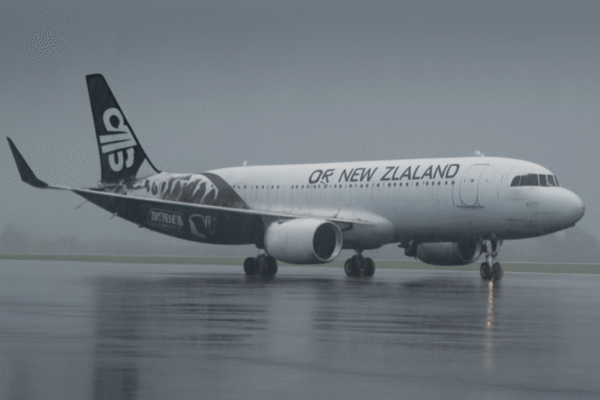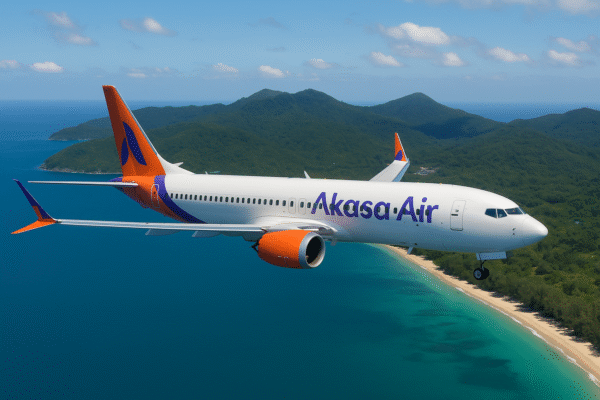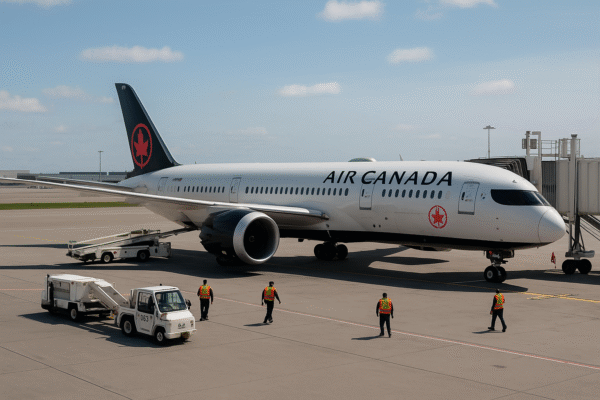Allegiant Travel Company, the parent of Las Vegas-based Allegiant Air, continued its upward momentum in May 2025, posting significant gains in passenger traffic and earnings. The low-cost carrier reported a 9.2% year-over-year increase in scheduled service passengers, transporting 1,545,033 travelers—up from 1,414,692 in May 2024. This solid performance reflects the airline’s continued success in capturing demand for affordable, nonstop flights to top U.S. leisure destinations.
Passenger Growth Driven by Vacation Demand
The company’s revenue passenger miles (RPM), a key metric measuring how many miles paying passengers flew, rose by 10.2% to reach 1.39 million miles. At the same time, available seat miles (ASM)—a measure of capacity—climbed by 16.3%, totaling 1.73 million miles. Despite this increase in capacity, Allegiant’s load factor dropped by 4.5 percentage points to 80.3%, indicating that while more seats were available, a slightly lower percentage were filled compared to May 2024’s 84.8%.
Still, the airline’s overall performance remains robust. Allegiant operated 11,174 scheduled departures in May, up 16.2% from a year earlier. This aggressive increase in flight activity shows the company’s confidence in seasonal demand, especially as summer travel ramps up.
System-Wide Success and Network Expansion
Beyond scheduled services, Allegiant also reported strong performance across its entire system, which includes fixed-fee contract operations. Total passengers in May reached 1,563,294, reflecting a 9.4% increase year-over-year. System-wide ASMs increased by 16.5% to 1.79 million, and total flight departures rose by 16.7% to 11,641.
The average stage length, or the average distance flown per flight, remained consistent at 884 miles for scheduled flights and 878 miles across the total system, underscoring Allegiant’s ongoing focus on medium-haul, point-to-point leisure routes.
However, fuel costs continue to pressure the bottom line. In May, Allegiant reported an average fuel price of $2.37 per gallon, highlighting the impact of rising operational expenses across the airline industry.
Strong Q1 Earnings and Operational Efficiency
Allegiant’s growth isn’t limited to traffic figures. The airline beat Wall Street expectations in its Q1 2025 earnings report, posting earnings per share (EPS) of $1.81, above the projected $1.70. Total revenue for the quarter came in slightly below forecast at $699.1 million, compared to an expected $701.2 million, but operational efficiencies helped the airline outperform on profitability.
The company recorded $33.4 million in net income, including $39 million generated by its core airline segment. Allegiant also achieved a 14% capacity increase and a 3-point improvement in operating margin, thanks to cost control and fleet optimization efforts.
Market Outlook: A Mixed Forecast
Despite a strong Q1, market analysts remain cautious. Goldman Sachs maintained a Neutral rating on Allegiant’s stock, with a price target of $56.00. The airline’s Q2 2025 EPS guidance, estimated between break-even and $1.00, is well below the consensus forecast of $1.85. As a result, Allegiant has withdrawn its full-year EPS guidance, citing economic volatility and rising costs as primary reasons.
Even so, the company remains optimistic. With demand for low-cost, direct flights showing resilience, especially in secondary cities and underserved routes, Allegiant continues to leverage its flexible business model to respond to shifting demand patterns.
April 2025 Performance Adds to Positive Momentum
In addition to its May results, Allegiant also shared preliminary figures for April 2025, revealing a 15.0% year-over-year increase in passenger traffic. The airline served 1,543,689 total passengers, including both scheduled and contract flights. While fuel prices were higher at $2.51 per gallon, Allegiant’s ability to manage capacity during off-peak travel seasons helped maintain profitability.
This adaptability remains one of Allegiant’s strengths. Unlike legacy carriers, Allegiant can scale its network based on seasonal trends, minimizing losses during slower periods and maximizing gains during peak months like summer and winter holidays.
Strengthening Its U.S. Market Position
As Allegiant enters the second half of 2025, it stands well-positioned to capture more market share in the U.S. leisure travel segment. The airline continues to focus on nonstop routes to high-demand vacation destinations such as Orlando, Phoenix, Nashville, and Los Angeles, appealing to price-conscious travelers seeking convenience and value.
The carrier’s strategy centers on direct flights from smaller cities—like Allentown, Pennsylvania, or Provo, Utah—to popular tourism hubs, avoiding the congestion and costs associated with major airport hubs. This approach not only reduces operational complexity but also delivers cost savings passed directly to travelers.
Conclusion: A Resilient Low-Cost Model for 2025 and Beyond
In a year where many airlines continue to grapple with economic uncertainty, fluctuating fuel prices, and changing travel behavior, Allegiant’s May 2025 report reaffirms its status as a nimble and cost-effective player in the U.S. airline industry.
While Wall Street remains cautiously optimistic, the airline’s focus on operational flexibility, cost control, and strategic market expansion keeps Allegiant ahead of many competitors in the budget airline space.
Looking ahead, Allegiant’s ability to adapt, optimize, and deliver on traveler needs will be critical to maintaining growth and profitability. With strong passenger demand, growing route capacity, and continued network investment, Allegiant is charting a clear course through the skies of 2025.
For more travel news like this, keep reading Global Travel Wire



















